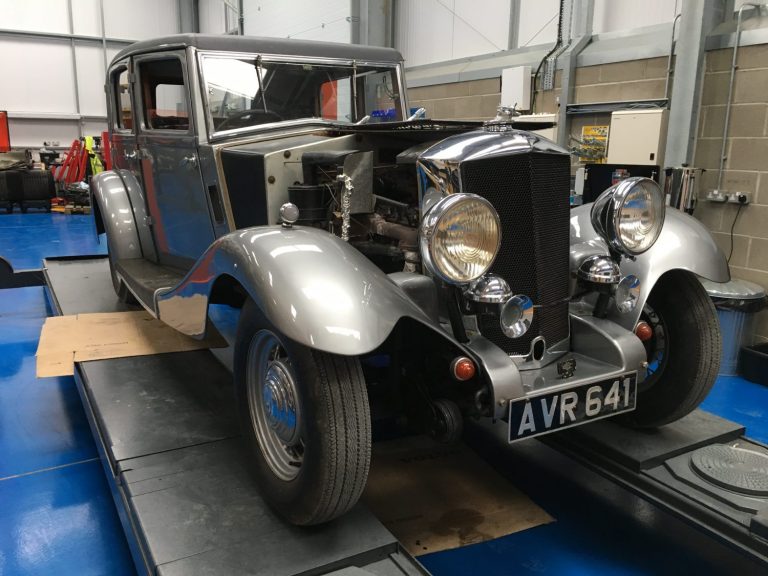
Railton is suffering from a leaky sump
Just as we were ready to return this beauty back to her owner we discovered a slight weep from the sump. The gasket has deteriorated


Just as we were ready to return this beauty back to her owner we discovered a slight weep from the sump. The gasket has deteriorated
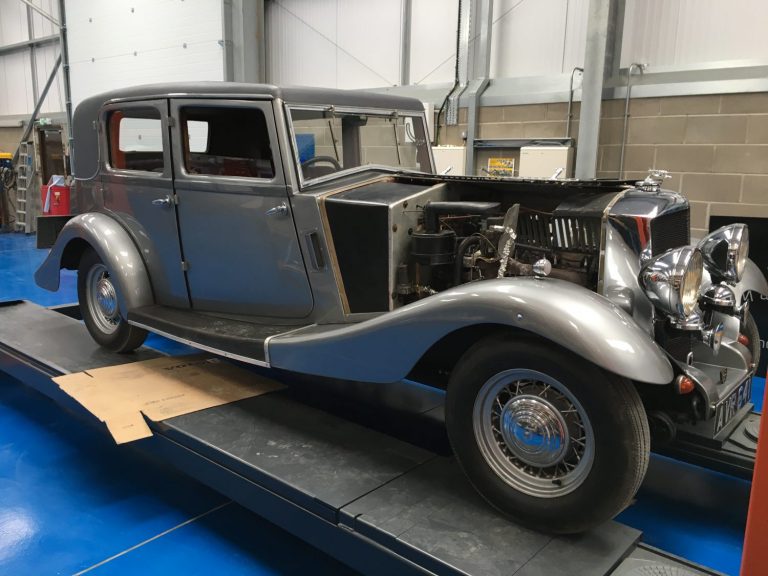
Source: Railton Owner’s Club Always fit a new cylinder head gasket, and make sure all the holes line up properly. Smear a film of non-setting
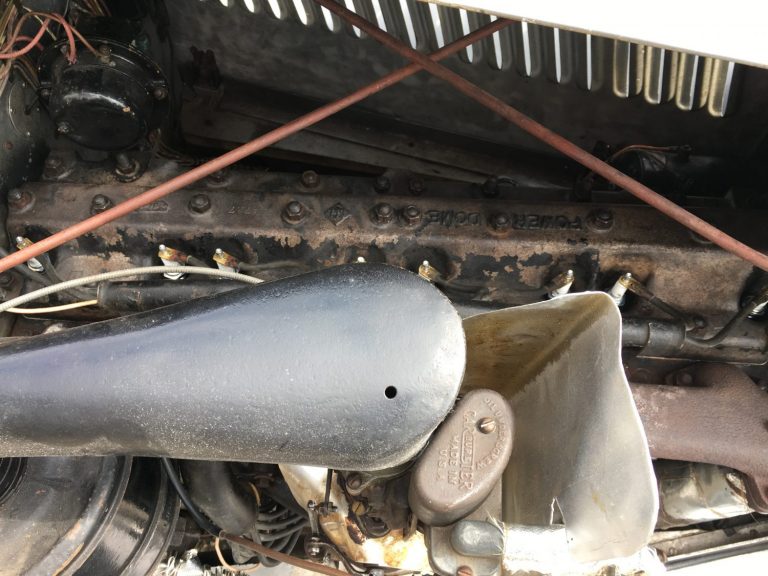
The parts have now arrived in from Mike at the Railton Owner’s Club so Pete has gotten straight on to the task of refitting the head
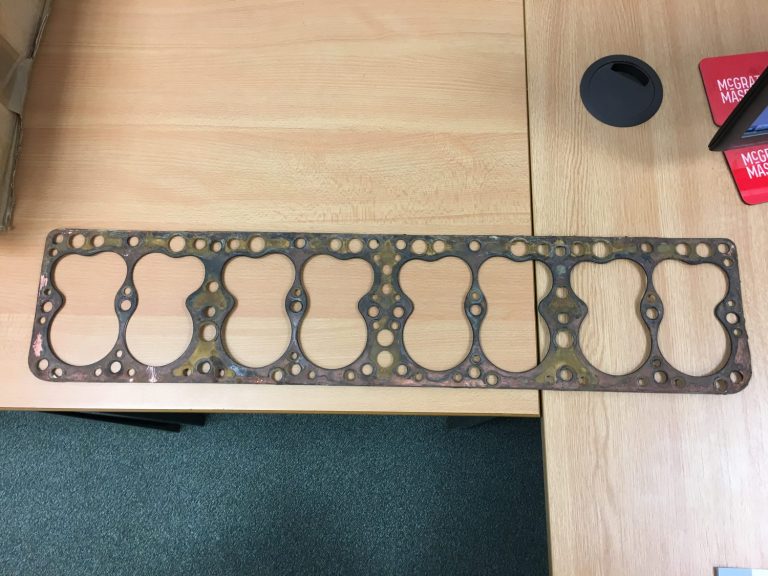
Don’t be fooled by the Maserati coaster, this is not a clue as to where to find a Railton head gasket!! In actual fact it
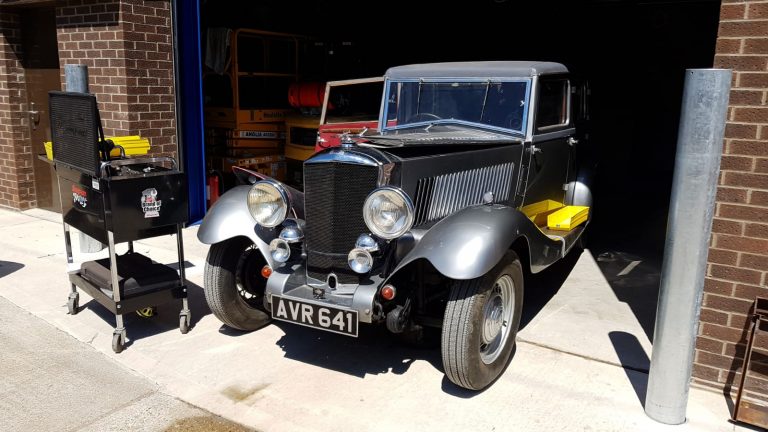
In our workshops today we have a beautiful 1935 Railton. Source: Wikipedia History The company was started by Noel Macklin who was looking for a new car
Just as we were ready to return this beauty back to her owner we discovered a slight weep from the sump. The gasket has deteriorated and needs replacing.
Mike from Railton Owner’s Club has one on the shelf which is on its way to us as we speak.
Fo now, she’ll stay put looking pretty.
Always fit a new cylinder head gasket, and make sure all the holes line up properly. Smear a film of non-setting type gasket cement on both sides and carefully lower the gasket over the studs, taking care not to bend it. Lower the head over the studs and fit the nuts with plain washers, screwing them down finger tight.
The following procedures are to be used for tightening the nuts:
8 cylinder, plan of nuts:
1 4 7 10 13 16 19 22 25 28
2 5 8 11 14 17 20 23 26 29
3 6 9 12 15 18 21 24 27 30
(i) pull down the following nuts to 15lb.ft. torque in sequence:
14 11 8 5 2 17 20 23 26 29
(ii) Go back to 14 and pull down to 30lb.ft. torque sequence:
14 13 15 11 10 12 8 9 7 5
4 6 2 3 1 17 18 16 20 19
21 23 22 24 36 27 25 29 30 28
(iii) Pull down nuts tight to 45lb.ft. in the same order as (ii)
The parts have now arrived in from Mike at the Railton Owner’s Club so Pete has gotten straight on to the task of refitting the head gasket and machined head.
The car is also in for a full service so a new service kit was also provided.
Don’t be fooled by the Maserati coaster, this is not a clue as to where to find a Railton head gasket!!
In actual fact it was much simpler than first thought. Mike has been absolutely brilliant at Railton Owner’s Club. A brand new head gasket is on its way as is all of the servicing components required to get our 1935 Railton back on the road.
In our workshops today we have a beautiful 1935 Railton.
History
The company was started by Noel Macklin who was looking for a new car making venture after he sold his Invicta company in 1933. The name came from Reid Railton, the world speed record car designer, but his input was probably small although he did receive a royalty on each car sold.
1933 – Railton Terraplane
The first car was made by fitting a British body made by coachbuilder John Charles Ranalah to a 4010 cc, 100 bhp, 8-cylinder Hudson Terraplane chassis. Described as a pre-war Shelby Cobra, the resulting machine was at first available as a two-door tourer. Being lighter than the original, it had for the time exceptional performance, with a 0–60 mph time of 13 seconds.[2] A saloon-bodied version was soon added to the range, and the cars were priced at £499.
1935 – Railton 8
In 1935 the original Terraplane chassis was replaced by the one from the Hudson Eight, the engine grew to 4168 cc producing 113 bhp,[3] and a wider range of bodies from several coachbuilders were on offer from at least seven different vehicle coachbuilders including; Ranalah, R.E.A.L, Carbodies and Coachcraft Ltd. Two special lightweight models were made in 1935 and, with a 0–60 time of 8.8 seconds, were claimed to be the fastest production cars in the world. Altogether 1379 of the Railton 8s were made.[2]
1937 – Railton Cobham
A smaller six-cylinder car, the 16.9 was added in 1937 using a 2723 cc Hudson 6-cylinder engine and chassis, but only 81 [2] were made in saloon or drophead coupé form and priced at £399.
1938 – Railton 8
An even smaller Railton, the 10 hp, joined the range in 1938 built on a Standard Flying Nine chassis and with either saloon or drophead coupé bodywork was claimed to be “A famous name in miniature”. 51 were made selling at £299.[2] In 1938 Motor Sport tested a 28.8 h.p. Railton Cobham saloon, FPH 970, offered for sale at £698.[4]
1939 – Demise
Noel Macklin turned his attention to powerboats in 1939, and he sold the company to Hudson Motor Car Company of Detroit, Michigan, who transferred production to their Brentford, London works. However, the outbreak of war in 1939 stopped production.
After World War II a few cars were completed using pre-war parts, and a new model was built and shown at the 1949 London Motor Show. However, at nearly £5000 the car was incredibly expensive, and it never went into production.
She has some running issues that we need to address. From first impressions the head gasket looks to be but as we delve further into the engine we may discover more of the cause. Pete has got to work removing the head, gasket and block to establish the cause of the problem.
Whilst in our workshops we will look to fully service the car and hope to get her back on the road whilst the sun is still shining.
We’ve enlisted the help of Mike from the Railton Owner’s Club who has been a fantastic contact to source parts and hopefully help set the engine back up.
Bridge Classic Cars are award winning Classic Car Restoration and Maintenance specialists. Your pride and joy is in safe hands with our expert Classic Car Technicians. Take a look at our awards here.